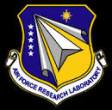AFRL issues BAA for Radio Frequency Communications Systems Research, Development, Test and Evaluation
 On September 3, the Air Force Research Laboratory released the following broad agency announcement for Radio Frequency Communications Systems Research, Development, Test and Evaluation (CSRDTE) (BAA NUMBER: BAA-AFRL-RIK-2015-0018). For FY16 consideration, the agency recommends that industry submit white papers by October 9.
On September 3, the Air Force Research Laboratory released the following broad agency announcement for Radio Frequency Communications Systems Research, Development, Test and Evaluation (CSRDTE) (BAA NUMBER: BAA-AFRL-RIK-2015-0018). For FY16 consideration, the agency recommends that industry submit white papers by October 9.
The Air Force Research Laboratory – Information Directorate (AFRL/RI) is soliciting white papers under this Broad Agency Announcement (BAA) for research, design, development, concept testing, evaluation and experimentation in the area of RF Communications Systems for Command, Control, Communications, and Computers & Intelligence (C4I). Efforts in this area may include technologies and techniques to control, monitor, configure and analyze the RF and spectrum environment. They may also include assessment, instrumentation and configuration and control of experimental systems. As RF and Antenna technologies emerge, new tools will be required to improve the usability, adaptability, and functionality of the Antenna Radiation Pattern and Isolation Measurement Ranges.
Research and Development, Demonstration, Experimentation and Evaluation
Today’s battlefield is composed of a diverse set of air and ground platforms with a numerous tactical analog and digital communications systems and sensors. RF systems present unique challenges and trade-offs at various stages of the system development process. A RF Communications system and antenna testbed serves as a common reference for testing adaptive antenna arrays and signal combining algorithms throughout the network stack, as well as complete systems.
The goal is to characterize system and antenna performance for various aircraft configurations, to optimize an antenna design or physical placement to achieve specific performance levels, or to validate antenna modeling and simulation software including but not limited to:
1) Antenna radiation pattern and isolation measurements on ground planes, ground vehicles, weapon systems, Electronic pods, and full-size military airframes.
– Measure the effects of airframe interactions on aircraft antenna radiation patterns and isolation in a simulated flight environment.
2) RF Communications system development and environment evaluations.
3) RF Communications signal waveform development and processing.
4) Test equipment/hardware interface and software development for unique RDT&E purposes.
5) RF Communications network development and evaluations.
6) Measurement methodology and information systems development and evaluation.
Demonstration and experimentation must define and develop the scenarios, tools and methodology that will support showcasing and assessing the merits of the capability of current and future DoD RF Communications, electronic warfare, and weapon systems.
This effort seeks to utilize far field antenna measurement ranges, anechoic chambers, and RF Communications laboratory facilities to perform Research, Development, Testing and Evaluation (RDT&E) on RF Communications Systems for the Air Force Research Laboratory (AFRL). The RDT&E effort maybe conducted at Air Force Research Laboratory (AFRL), Rome Research Site (RRS) facilities located in Rome, and the antenna measurement facilities at Newport Research Facility (NRF) (fighter class) and Stockbridge Research Facility (SRF) (bomber/cargo class), and at other facilities/locations as required.
Full information and instructions are available here.
Source: FedBizOpps







